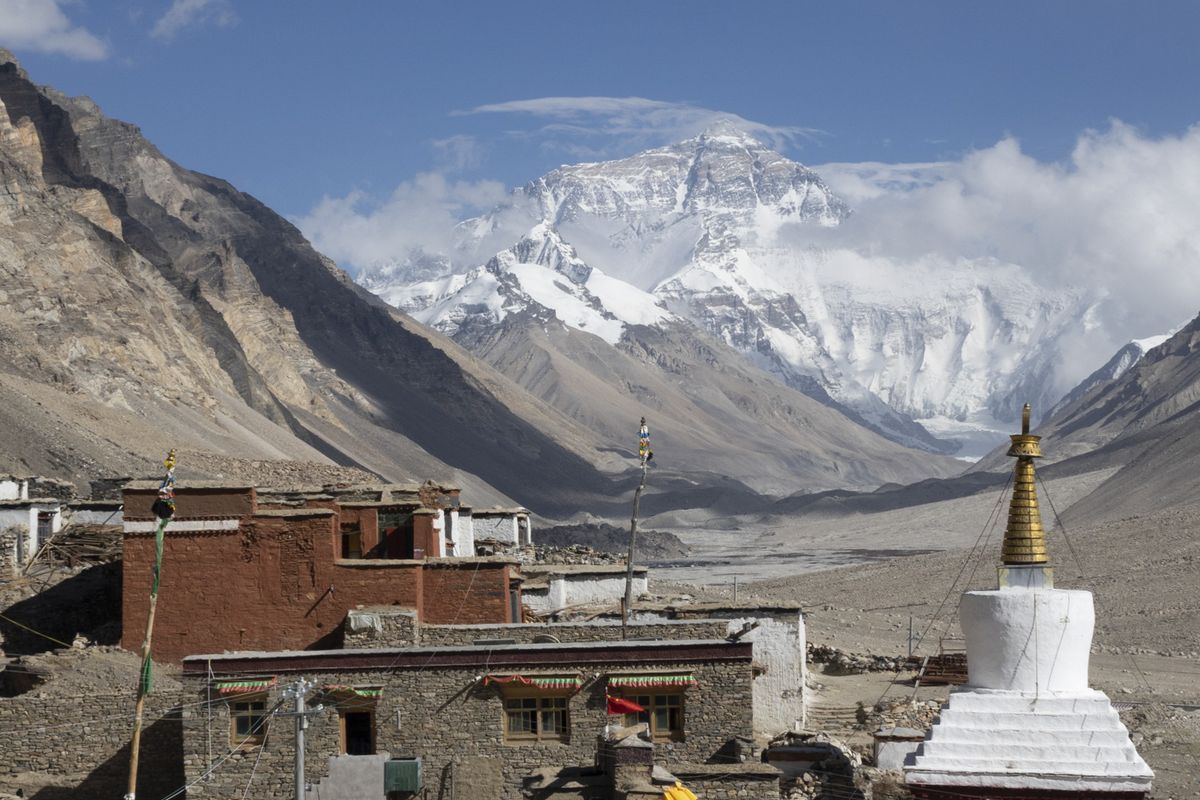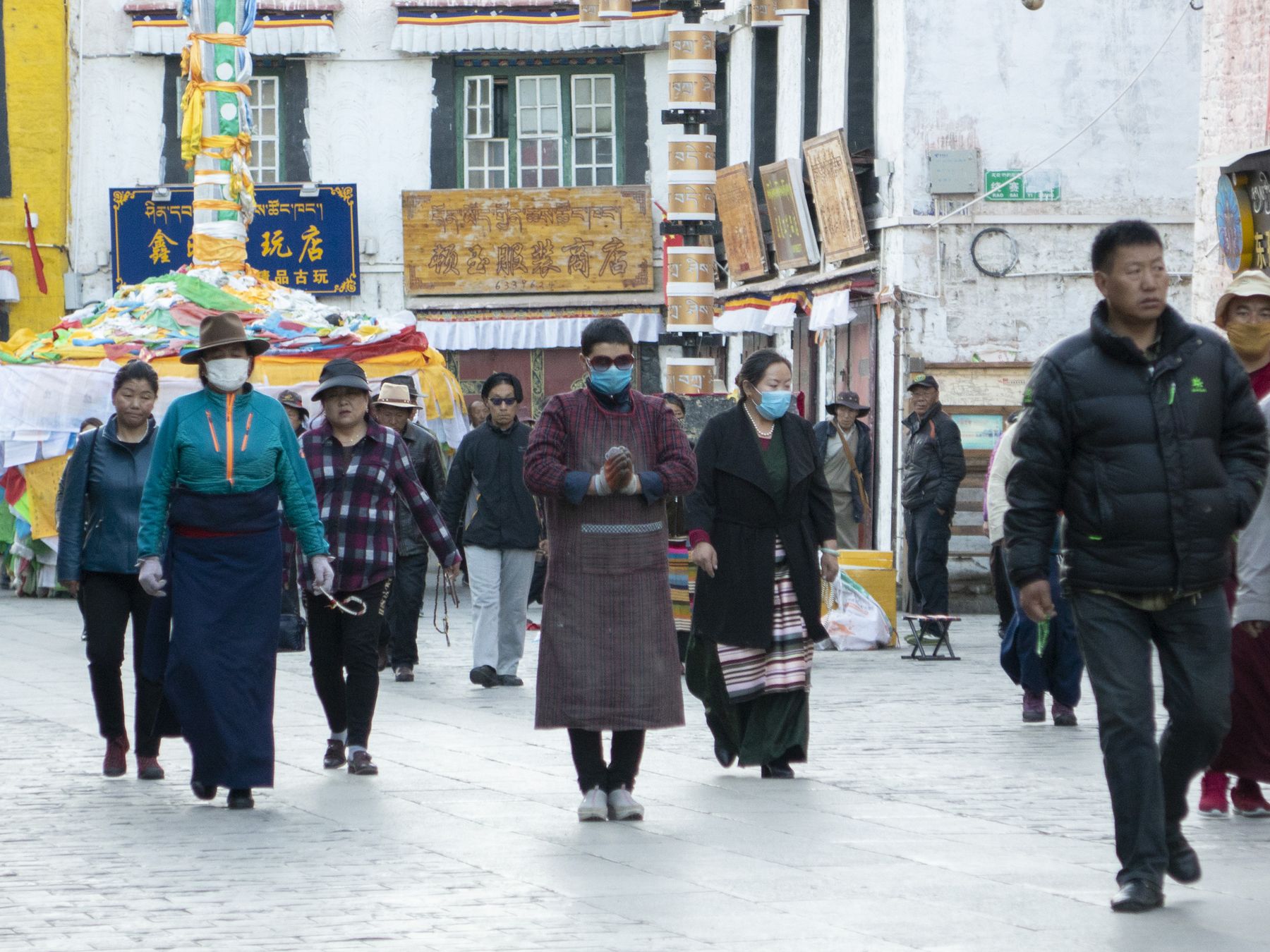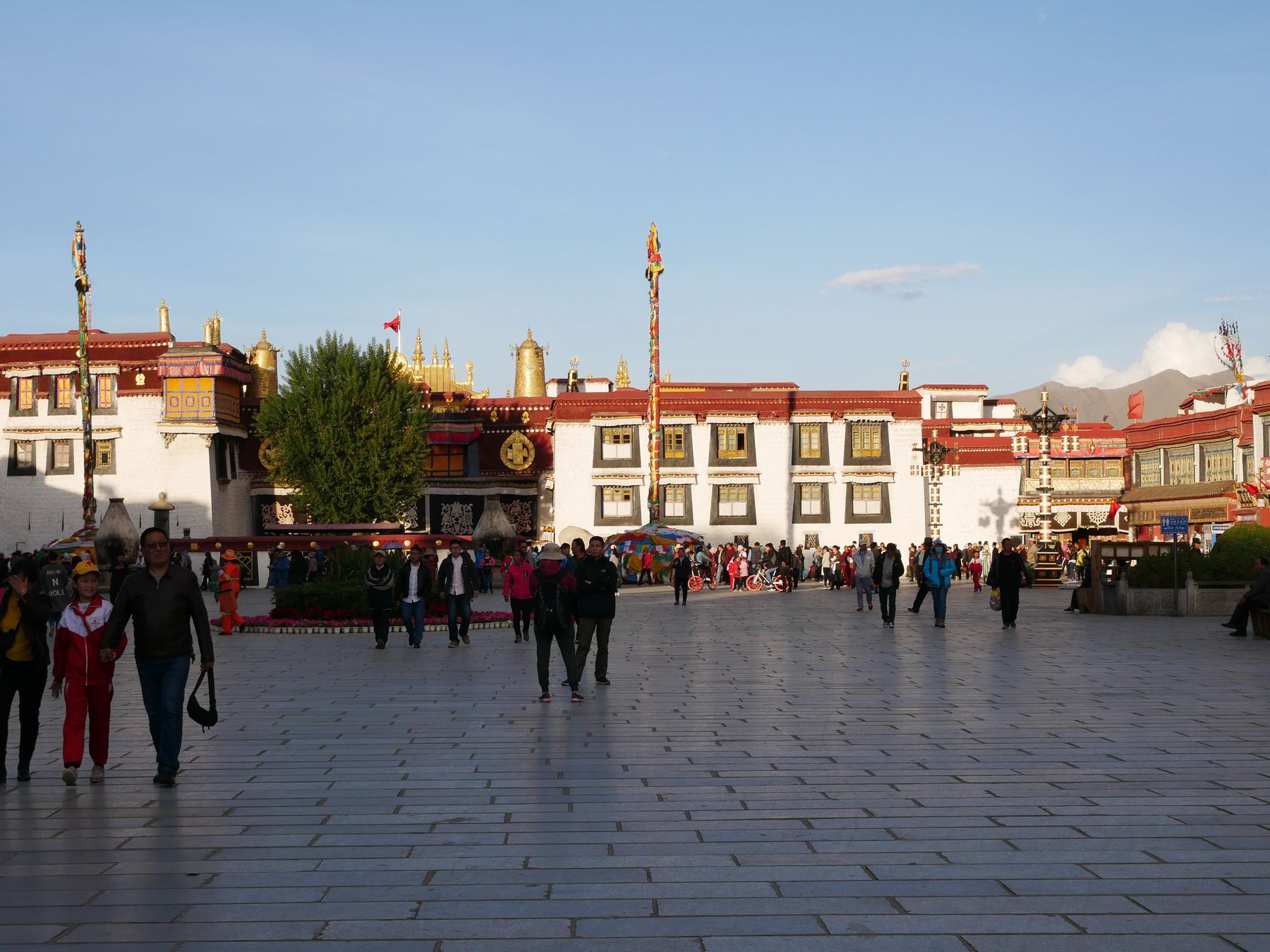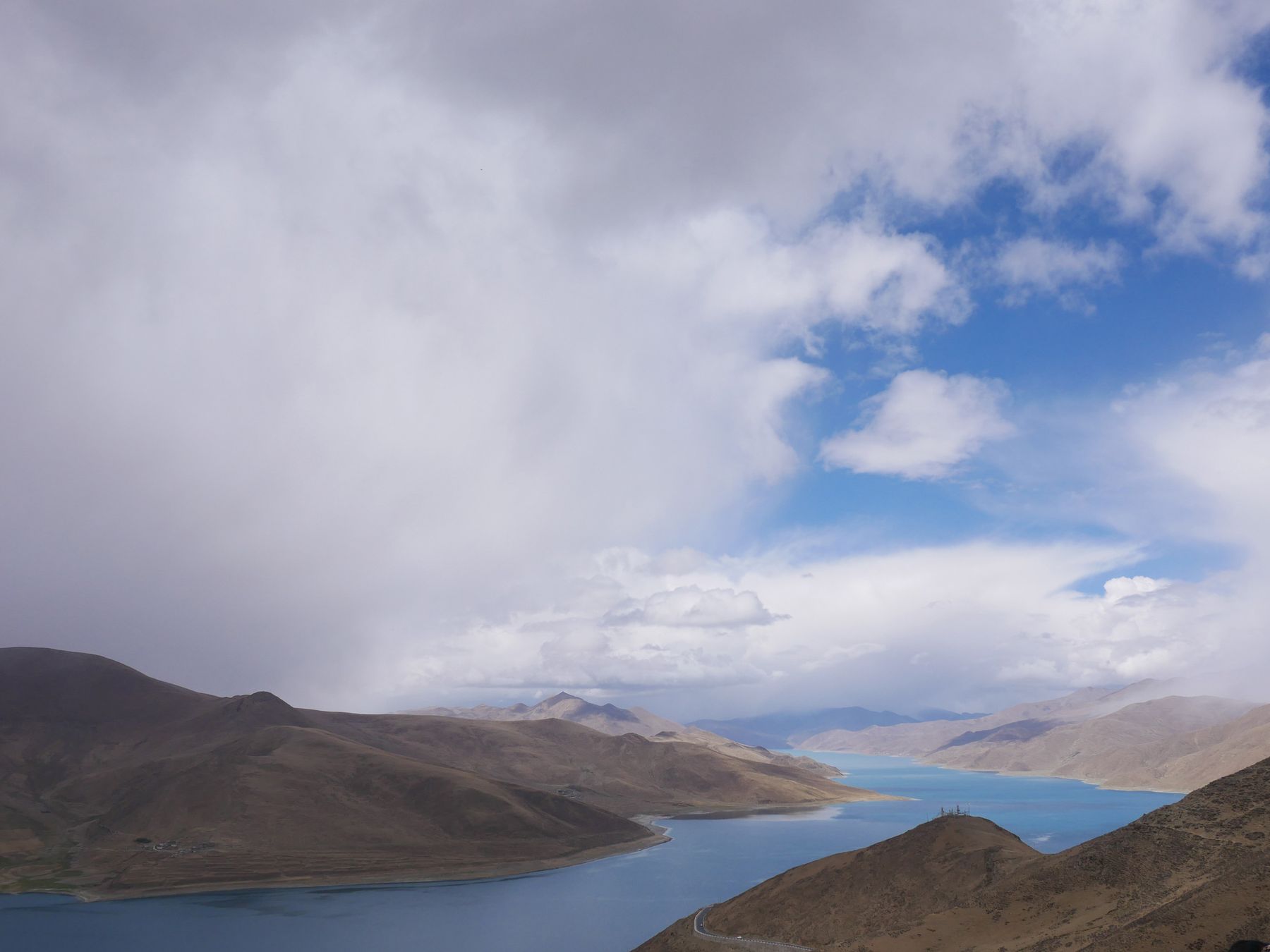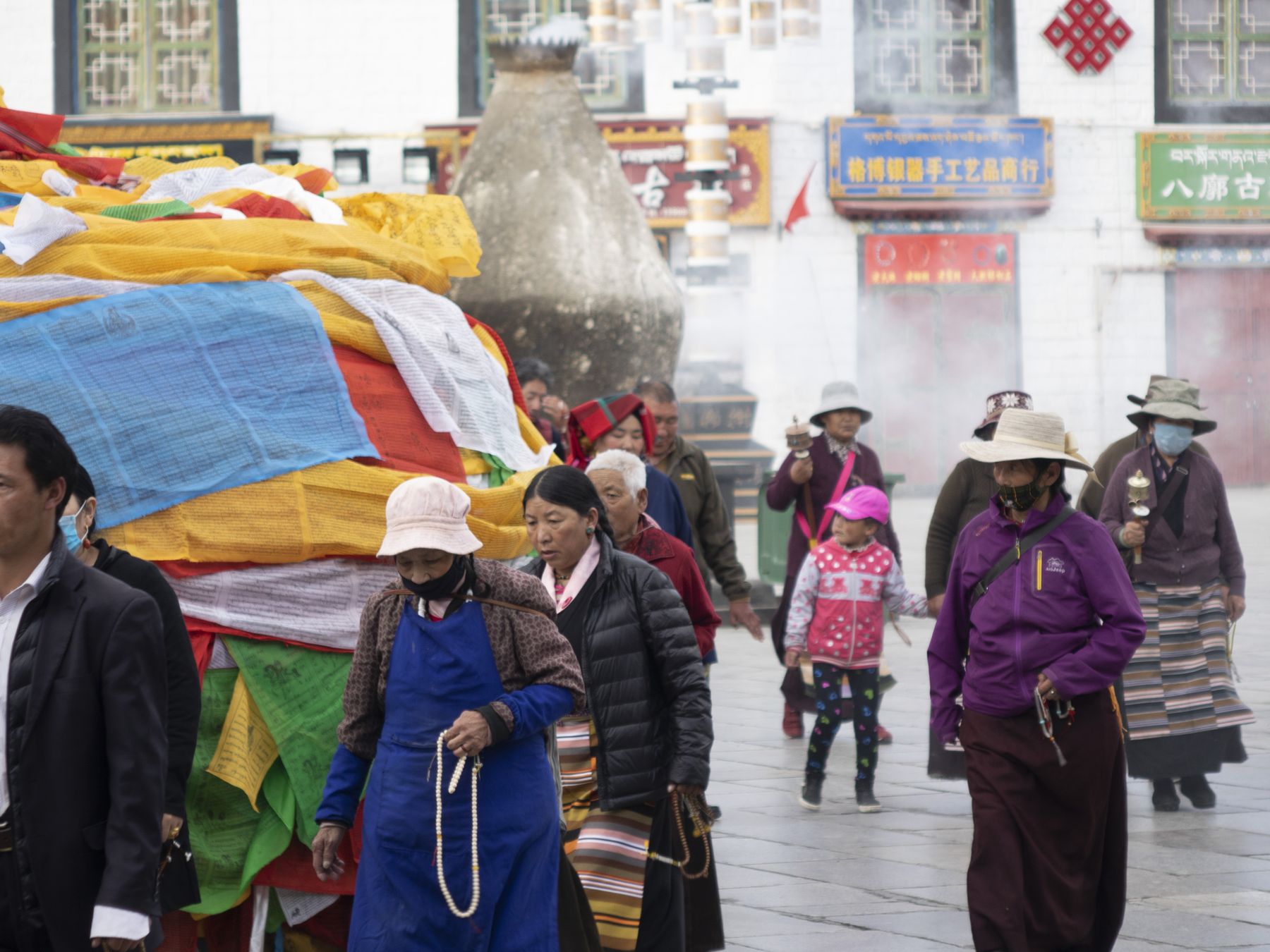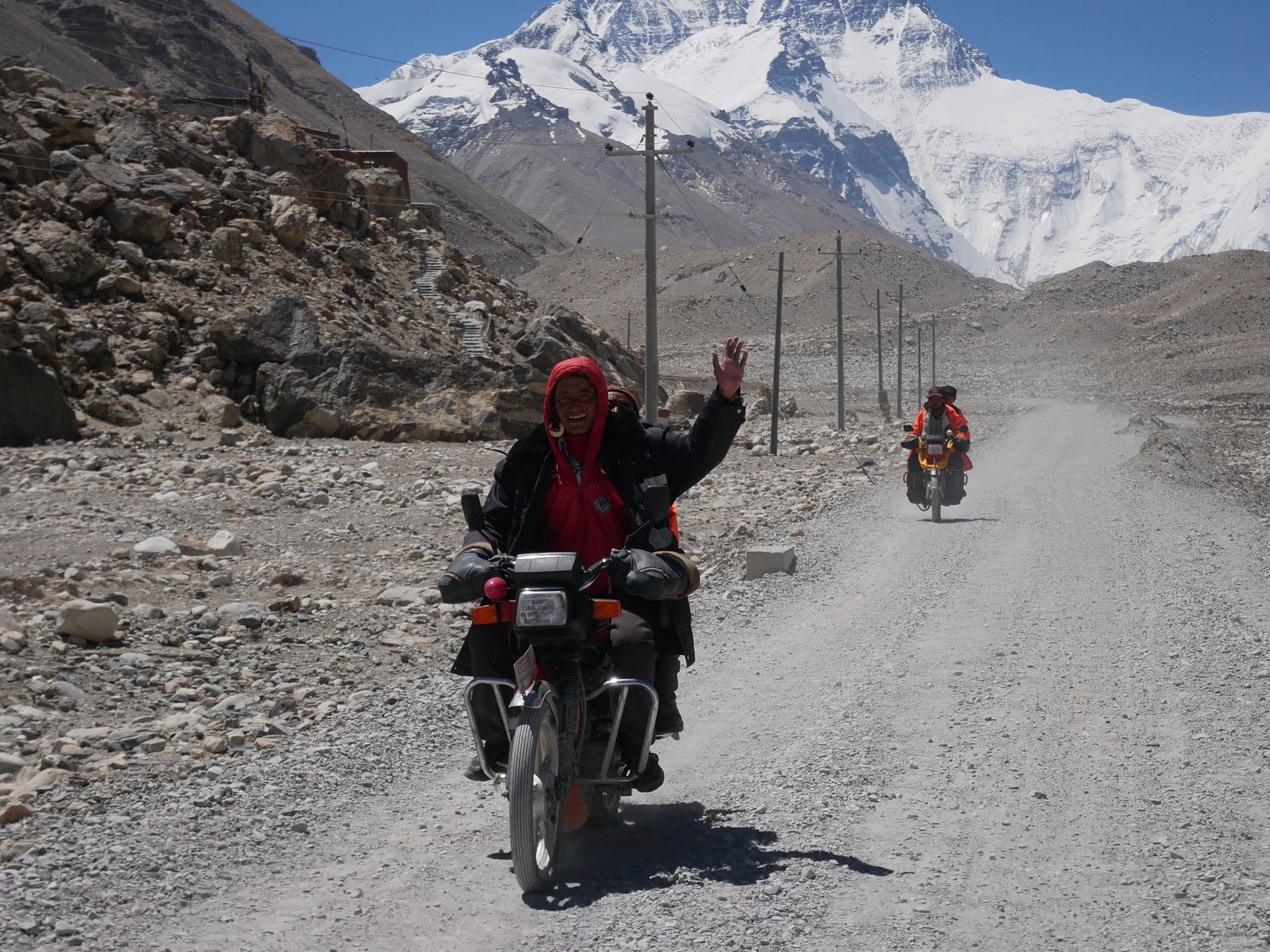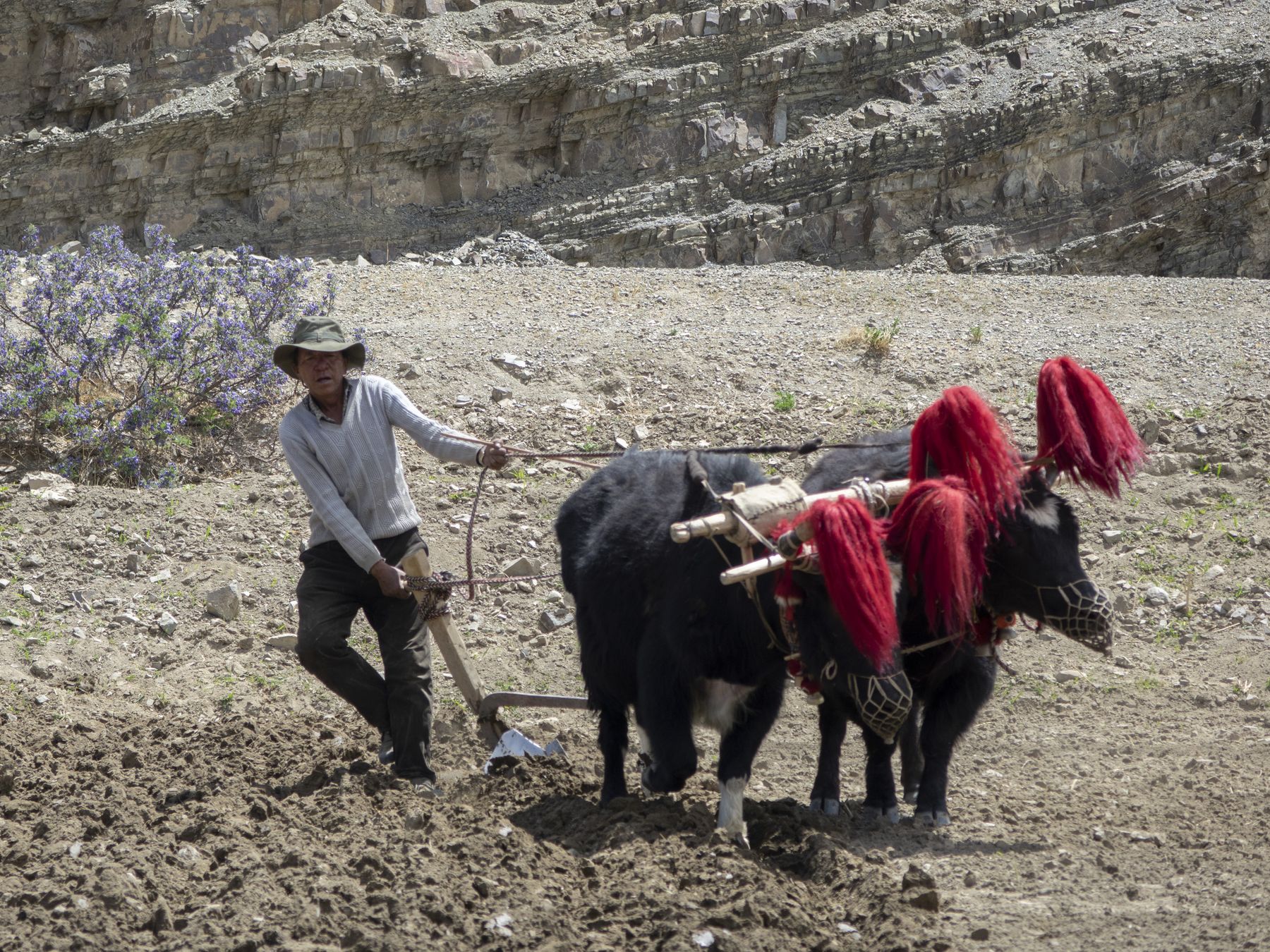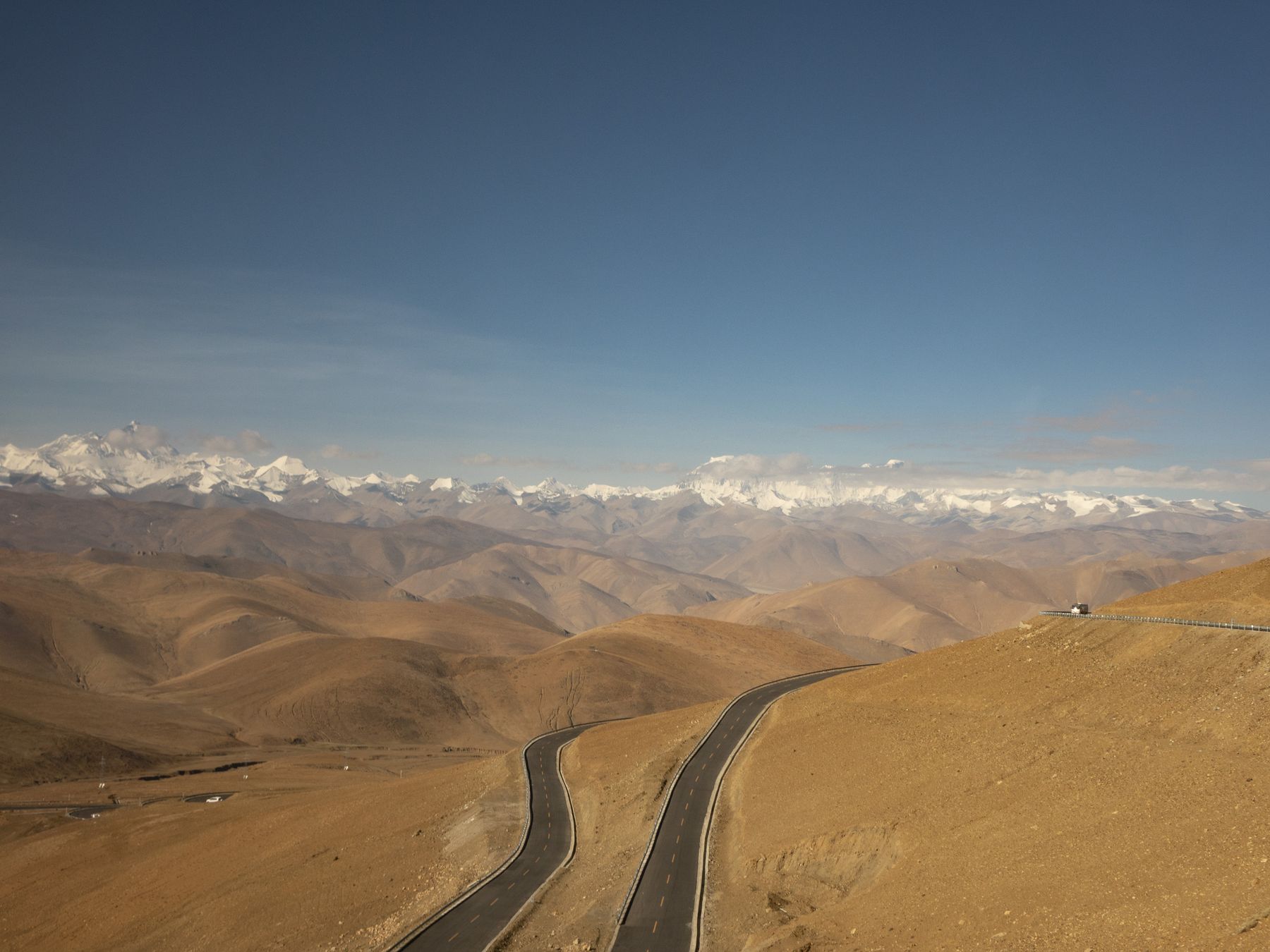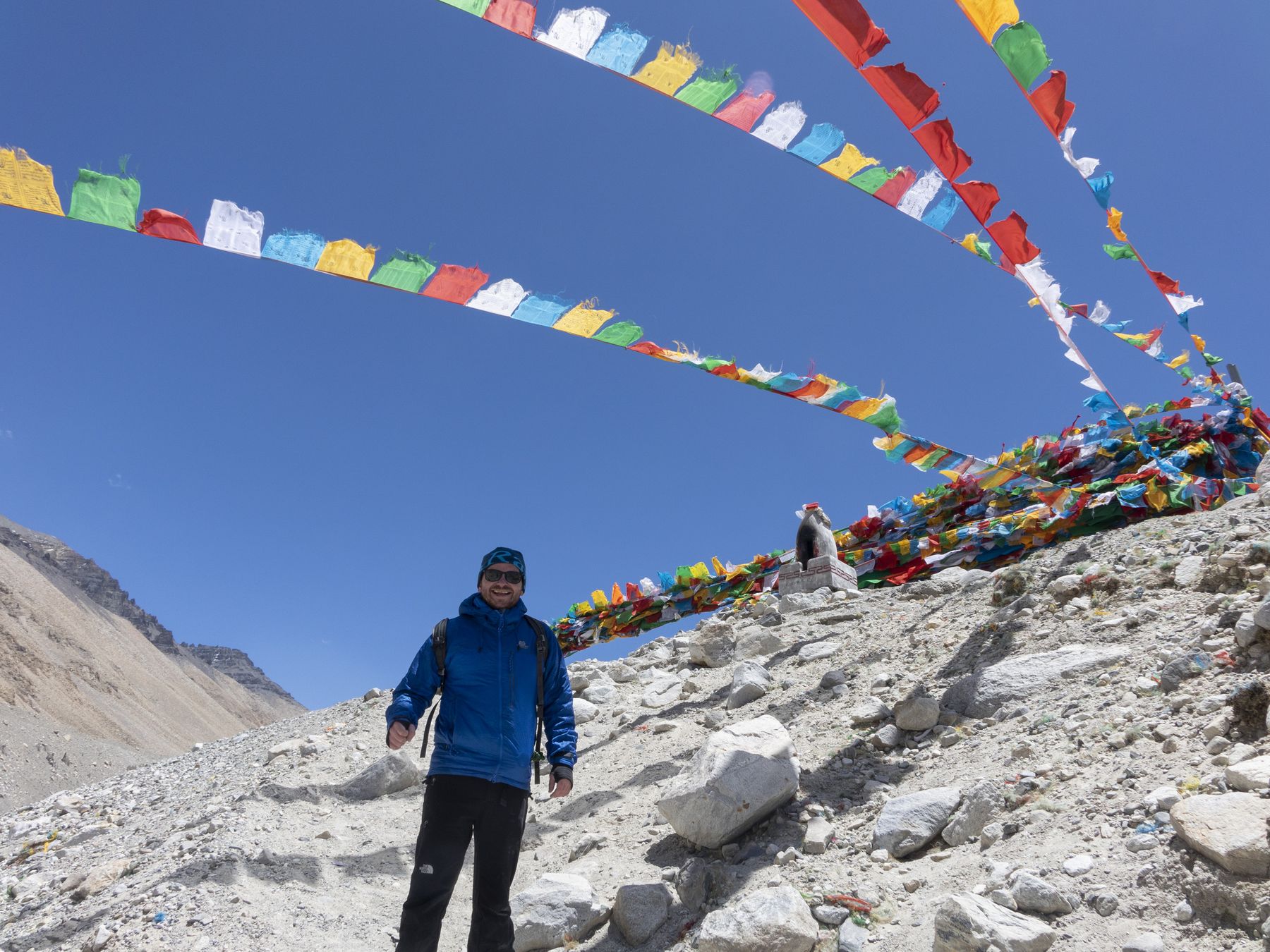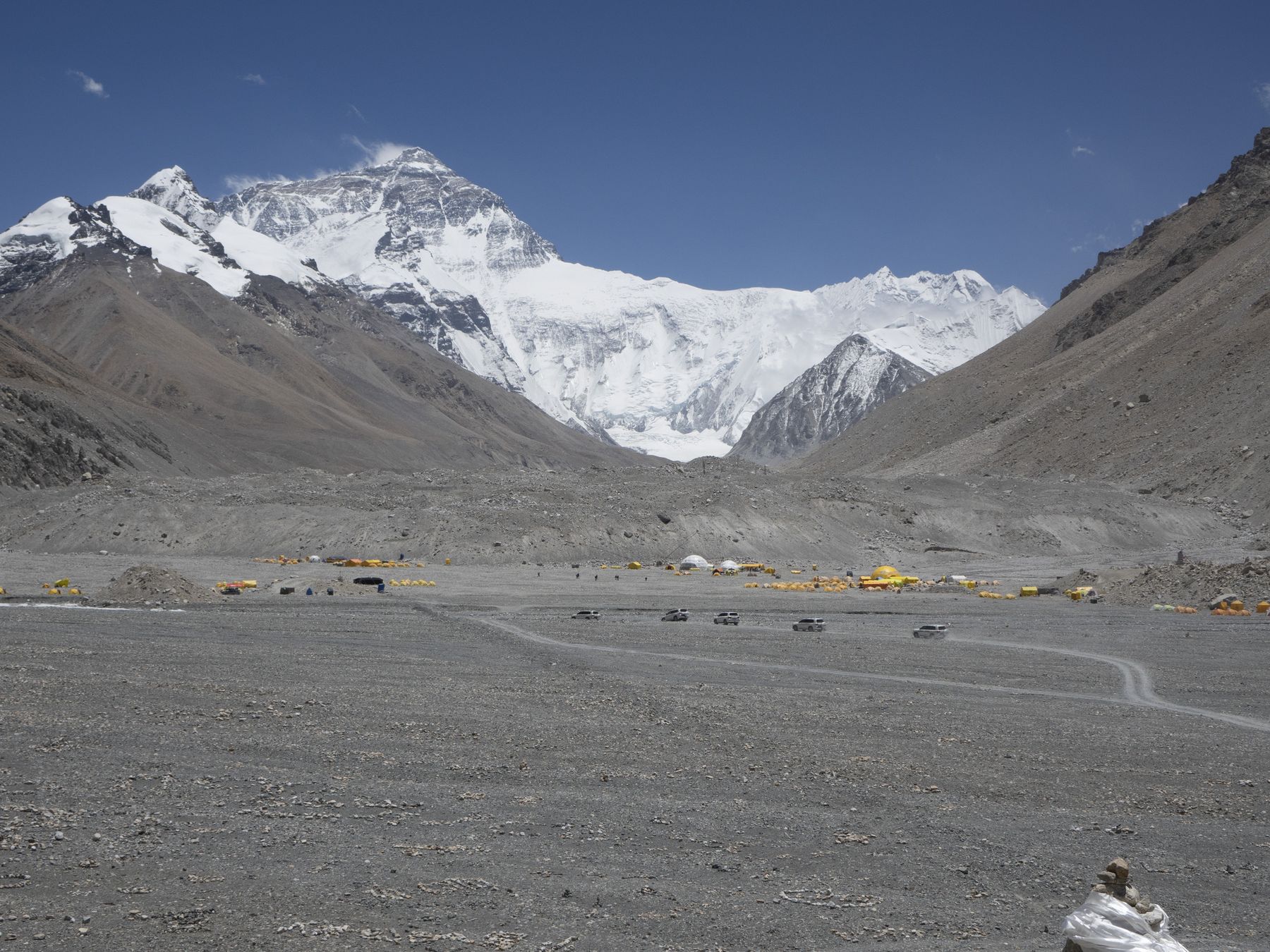Team travel journal: Nick's Tibet
by Nick
Image gallery
'After four days in Beijing, I was ready to escape the city and make a train journey I’d been thinking about (admittedly not all of the time!) for a number of years. Climbing from 50m below sea-level to a peak altitude of just above 5000m on day two, this three-day trip promised to be unlike any other train journey I’d taken before. And - not to boast, but I’ve taken the Trans-Siberian from Moscow via Siberia and Mongolia to China and on to Hong Kong...
I was anticipating incredible panoramas, amusing chance encounters, perhaps the odd visa or paperwork ‘complexity’, and a large helping of culture shock. I expected challenging food (I’ve travelled on the Trans-Siberian and in Mongolia, remember!), snoring compartment companions, and hopefully plenty of fun.
I was not disappointed. I shared my four-berth compartment, complete with an oxygen pipe for when we climbed over 4000m, with a couple from Lhasa and man from a more remote corner of Tibet. I know this only because an English-speaking Tibetan befriended me, and spent some time helping us each with introductions beyond the nods, smiles and offers of noodles (from me to them) and return offers of bizarre-looking fruits, sweets and I-don’t-know-whats (them in my direction).
It always amazes me how much we can say to each other when no common language exists (and I do mean not a word – I had tried rolling out my finest Tibet a couple of times, but their blank glazes made it clear that a lot of work was obviously needed). However, a fortuitous occurrence such as this gave us a few minutes at least to swap stories and lay some foundations!
The ever changing vistas from our compartment window were undoubtedly the highlight for me. They were stunning. We would travel for mile after mile - hundreds of them, in fact - across lunar-esque landscapes, not seeing a single soul, or maybe just the odd farmer’s shed or yurt, then all of a sudden a huge city (often with a sizeable concrete plant or industrial machinery) would pop into view. I’d glimpse what was home to perhaps hundreds of thousands, then see it disappear to reveal more rock and desert. My GPS unit often showed nothing at all!
The climb was amazing, but I soon understood why I’d been advised to break the journey at one or even several points along the way. I know from my trekking adventures how important acclimatisation is (extremely!), but my limited time had pushed me to ignore the advice, and make the journey in a single leg.
This led to the odd comedy 'doze' (or worse - with no English-speaking witnesses, it was hard to know) and certainly significant spells of not knowing what time zone I was in, or where exactly in the train I was. All fun and games.
We finally pulled into Lhasa on the third day, in the early afternoon. My guide, Sonam, was waiting. As the only unaccompanied westerner on the train (and standing at 6’6”) I was easy to spot. Blending western and traditional Tibetan styles, Sonam was sporting a traditional chuba over jeans, with a pair of Raybans to complete the look. Born and raised in Tibet, he - like most others I met - was easy-going but passionately fond of his country.
Up until this point, I had been concerned about how much of the current political situation I would or should be able to discuss. How much history would be eradicated from the tourist guide’s ‘pitch’, and how much had the decades of Chinese occupation altered the country? Sometimes, partially and plenty. However, this is not the platform for such conversations, and nor is it the intention of this piece; I want the focus to be on the wonders of travelling in this magnificent, mystical country, state or zone, depending on your position.
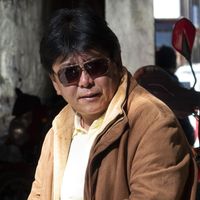
Sonam is a private Tibetan-born guide; our driver (a dead ringer for a Tibetan Shakin’ Stevens, as it happens, as illustrated to the right) was provided by the Chinese state. There are many Chinese state-provided security, Chinese soldiers and Chinese police, who you encounter on a regular basis. I learnt a lot, and I respected the laws and followed my nose when it came to when, where and who I should talk to about certain subjects.
For my background on what is a significantly complex situation, I had turned to Tsering Shakya's Dragon in the Land of Snows, and would recommend you do likewise if a debate on the status of Tibet is what you are searching for.
Back to my arrival in Lhasa. There’s no avoiding it - my first impressions, driving from the station to the city centre, were not positive. Ugly blocks, un-atmospheric neighbourhoods, and a distinct lack of temples and Buddhism, which are always amongst the key draws of any Asian destination for me. We pulled up outside my very central hotel, and not much had improved. It only changed that evening, once I’d met up with my colleague Ed (who’d flown in from Kathmandu), and our local connection, who suggested that we might want to join him for a walk.
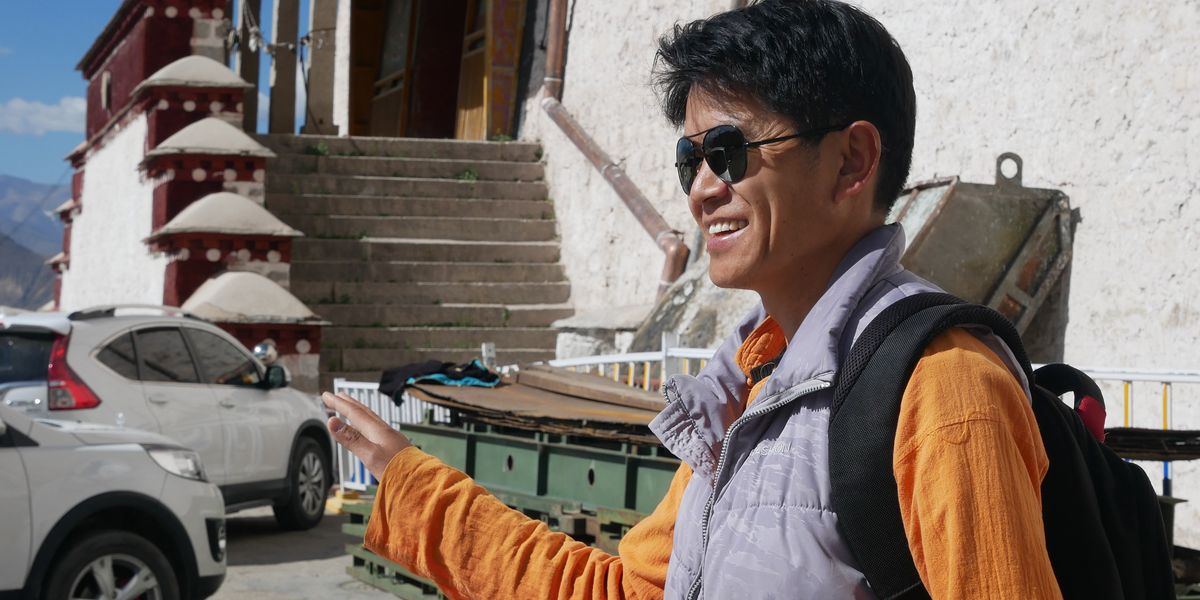
We took a little persuasion, since both Ed and I still very much adjusting to Lhasa’s 3700m altitude (Ed more so, given he’d landed just that afternoon, and had not been given my crash course in altitude adjustment on rails), but we were soon glad we had. Crossing over another faceless, typically Chinese thoroughfare, we suddenly found ourselves in a neighbourhood of narrow cobbled lanes filled with small markets and shops of varying purpose (monk store, anyone?!), and traditional stone buildings lining the streets, and as we delved further we hit gold. Old Lhasa. Old and young, mostly wearing the Chuma, many pronating themselves, as they walked the kora around the Jokhang, Lhasa’s holiest temple. This was the Tibet that I’d imagined, and one I would see more of once out of the capital. Whilst the Chinese have brought much development across the country, they appear to have allowed the Tibetan people to retain some of their heritage; a move that is always a good path towards peaceful cohabitation.
In a matter of seconds, everything dropped down a notch, and I immediately fell in love with the city. It was ancient and otherworldly, charming and invigorating. It was a place filled with wonders and nooks and crannies. The following days were spent acclimatising during various visits - to the magical site and raw energy of the debating garden at Drepung, and the impressive Sera Monastery nearby, the Namgyeling Ganden Palace, and the Jokhang itself, which has since then been subjected to fire. The extent of the damage remains unknown, but I feel truly blessed to have seen it before it was no doubt robbed of many of its riches, if images I’ve seen are to be believed (the Chinese media reported minimal damage).
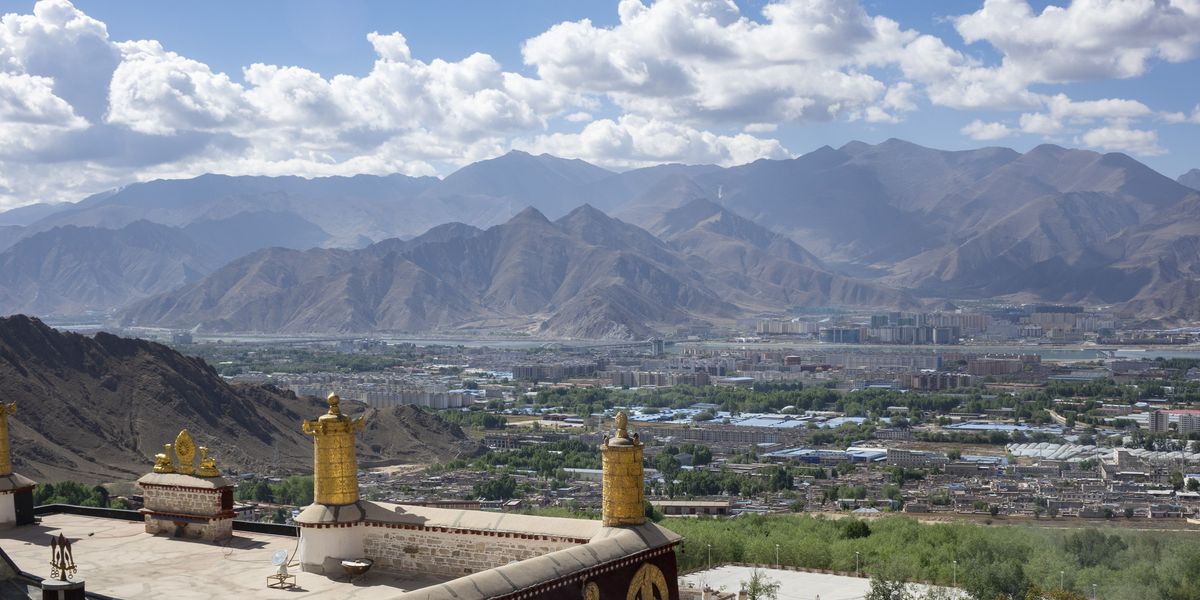
I visited the Potala Palace each morning before sunrise, alone (sleep and Asia don't mix well for me; I'm too hungry to walk its streets and soak up the atmosphere of the city as it wakes!). I shared the palace with just the two lone guards who stood on the parade square out front through the night, never talking to each other, and the occasional hunched passerby walking quickly past.
As the sun rose, others would arrive and spend time looking at the palace, contemplating. Superlatives run out for me. I felt an immense affinity with it, thinking back through its history, which is tumultuous, although sometimes quite humorous - the sixth Dalai Lama used to break out and cause havoc in inns across the city, out on the razz with whomever he took a fancy to, man or woman. Just seems a shame that they couldn’t resist putting a Chinese flag on top.
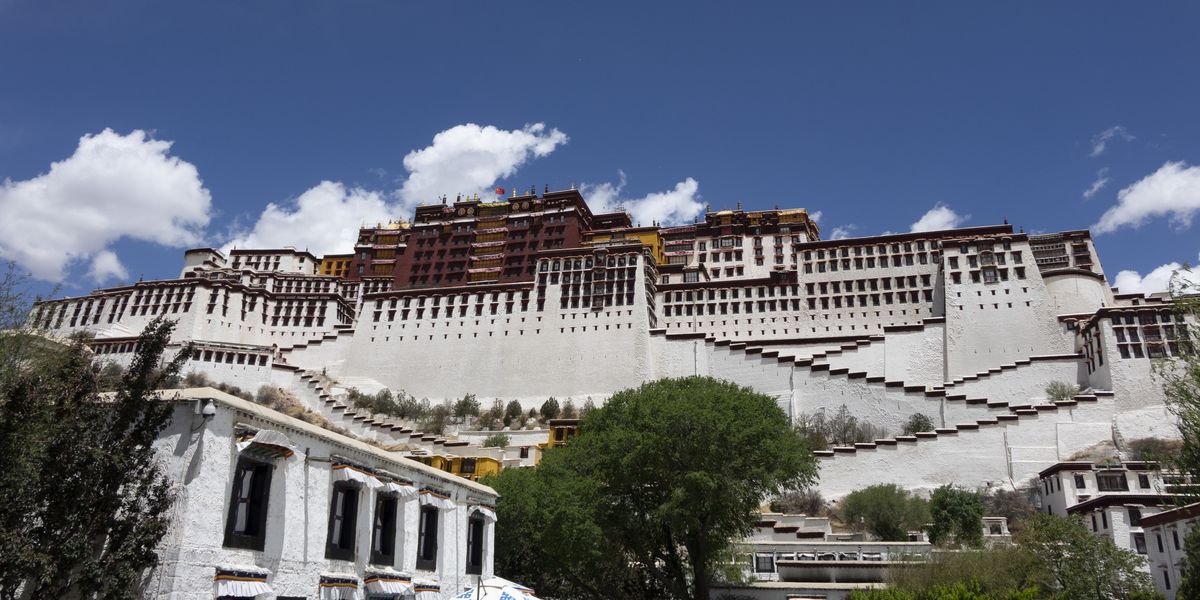
After four nights in Lhasa (and four blissful mornings at the palace for me), we were itching to get moving. We drove west, via Gyantse, which I thought was charming. Pelkor Chode, its main monastery, was very special - really fun to explore, with various nooks and crannies.
The drive to Sagar the following day was long but very interesting due to the ever-changing landscape, roadside noodle stops and - about half way there - is Sakya Monastery. Massive, very isolated, quite fortress-like, it contains the most amazing library of 84,000 religious scrolls, which were discovered in 2003, sealed in a wall. In summer, the whole area is really barren and dry, giving it quite a surreal feel.
And then we got to the business end of the trip; the approach to Everest, or Qomolangma (‘mother goddess of the wind’ or ‘world’), as it is truly known.
Which is what we really came for...
On entering Qomolangma National Nature Reserve, the increase in anticipation and excitement was palpable. Ed and I caught each other’s eyes and his face mirrored what I was feeling - sheer simple awe. We were fast approaching the foot of the world’s largest mountain, feeling like we were arriving at the front door of Muhammad Ali and nervously pushing the doorbell. Ed had been to Everest before, on the Nepalese side - that was an eight day trek to base camp. And here we are, in Tibet, just a few hours drive from the eastern flank of the same massif. The road in the NP was sublime; the hairpins and switchbacks went on forever as we climbed ever upwards, descending briefly into small valleys and then back up the other side.
We kept glimpsing small sections of white peak in the distance - was that it? Was that the sort of view we were going to get? We badgering Sonam for answers; his wry smile told us ‘just wait - all will be revealed’. We ascended further and further up a road which James May and his loudmouth entourage would make an entire show over… how it hasn’t happened already is beyond me - they’ve missed a trick.
The sky was clear blue, not a puff of cloud, as we climbed over a ridge and into silence. A mountainous lunar landscape spread out before us - brown, desert-like peaks, more than you could see without turning, spread out down below us, all leading to a huge massif of white; and in the centre of it stood one peak mightier than all the others. There was no questioning which was the mothership. There was a tear, I’m not ashamed to say it - I challenge anyone not to be emotionally moved by what we witnessed, standing on our own with surely the planet’s greatest creation sitting there right in front of us. You simply can’t take your eyes off her. In the foreground, colours changed as the sun came up, first hitting us and giving us much-needed warmth, then chasing down the rifts and valleys which led for miles toward the snowy peaks of Qomolangma.
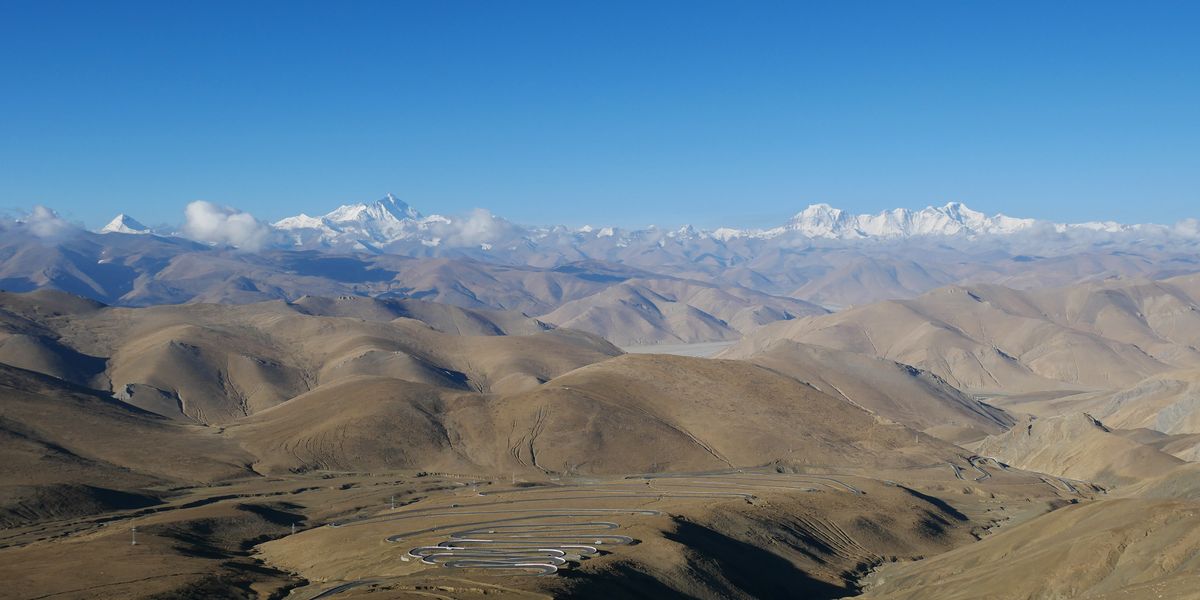
Finally Sonam dragged us back into the car, and we descended into the lunarscape and drove on through, stopping for tukba (of course) at a small town just an hour from base camp. People really do live this close.
Arriving at Rongbuk was a very important moment for me. Michael Palin had first introduced me to mountains as a child when I watched his series Himalaya, and pored over the accompanying book. The VHS tapes I’d recorded off the telly were worn thin at the section where he visits the Rongbuk monastery, staying in a seriously run down guesthouse (think holes in walls and no carpets at 4,980 metres!), but waking to the most mesmerising view imaginable. I’m happy to report that NOTHING has changed. I’m convinced I may even have had his room (although I saw no MP was ‘ere tags).
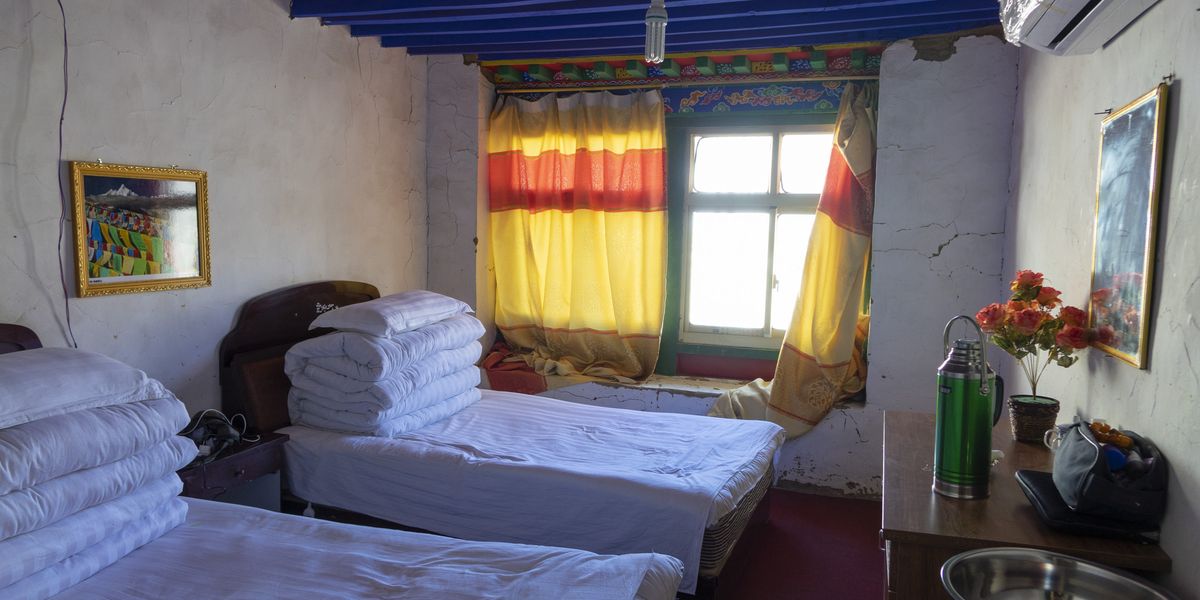
The monastery sits just two hours walk from Qomolangma base camp, and is a very magical place. I can remember it like it was yesterday. When you visit a place you are unlikely to visit again due to its remoteness, you tend to take far more in. We made the two hour hike to the base camp, stopping at another small monastery built into a rock face, which not only has a life affirming meditation cave hidden in a small cave under its floor - where Ed and I may or may not have truly ‘found ourselves’ - but also surely the greatest outdoor urinal ever conceived. No taxi monkey or 3-for-2 advertising placards to occupy you while you carry out your duty - just little old Mount Everest, and a double glazing ad it is not.
I don’t know quite what I’d been expecting, but arriving at base camp itself was more than I could have ever hoped for. Laid out beneath us were clusters of yellow and orange expedition tents. We sat on a rocky mound which provided a high vantage point, facing into what is presumably an everyday kind of wind in these parts. Sonam had only at the very end pulled his chukba over his top half to cover the single shirt - all the while, we were wrapped in expedition-ready down jackets. Prayer flags were licking us from all sides. Teams of mountaineers went about their business down below us. While we were there, a certain Killian Jornet smashed the world record for the fastest ascent of Everest, ascending without oxygen in just 26 hours. Most take 2- 3 weeks to accomplish this. Being at base camp, even as the tourists we undoubtedly were, made us feel part of something very special.'
Speak to one of our Tibet Specialists on +44 (0)1273 670 001, or send us your enquiry.
by Nick on 18th October 2018
